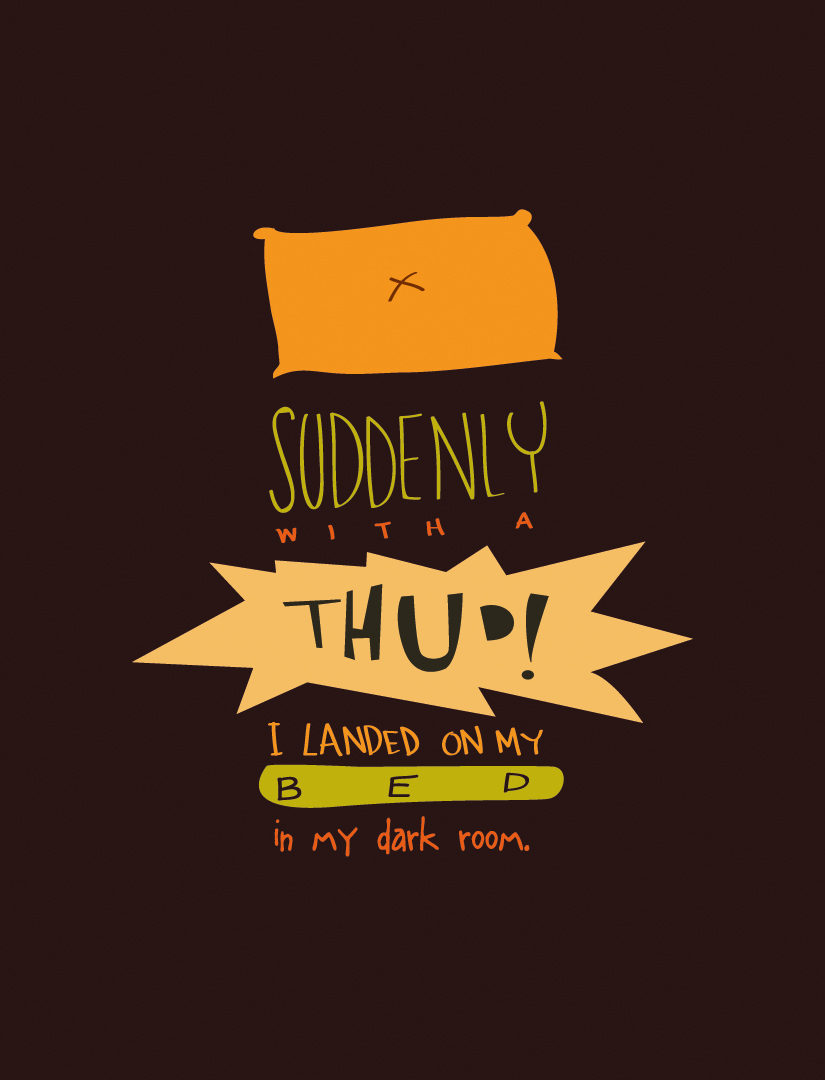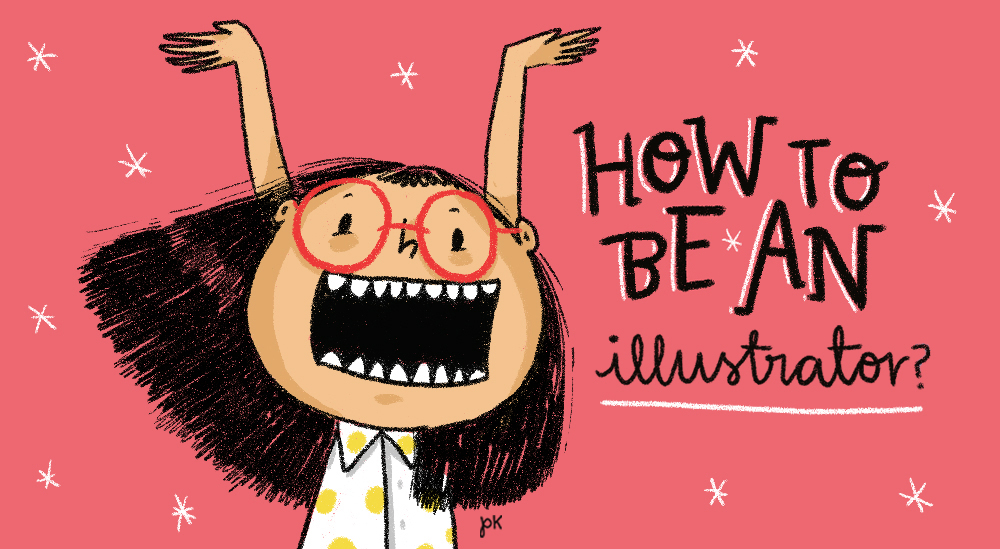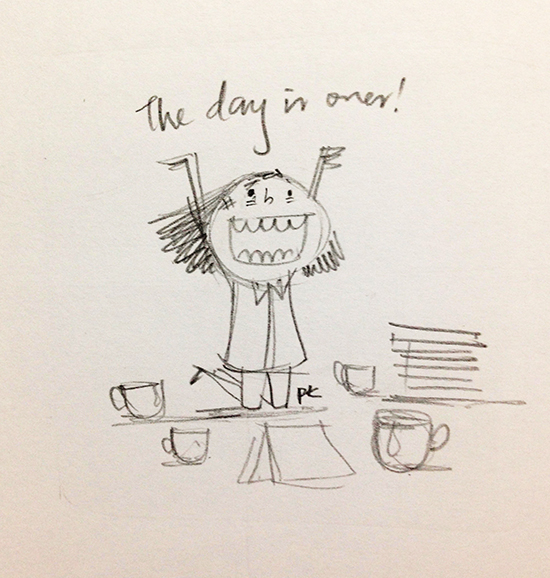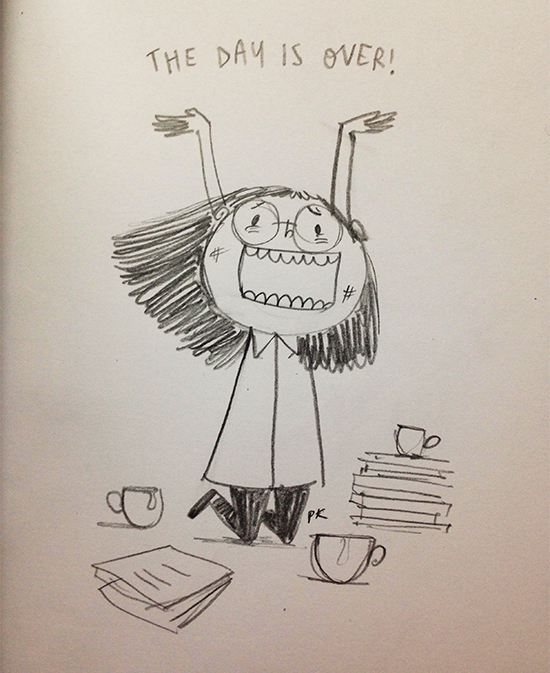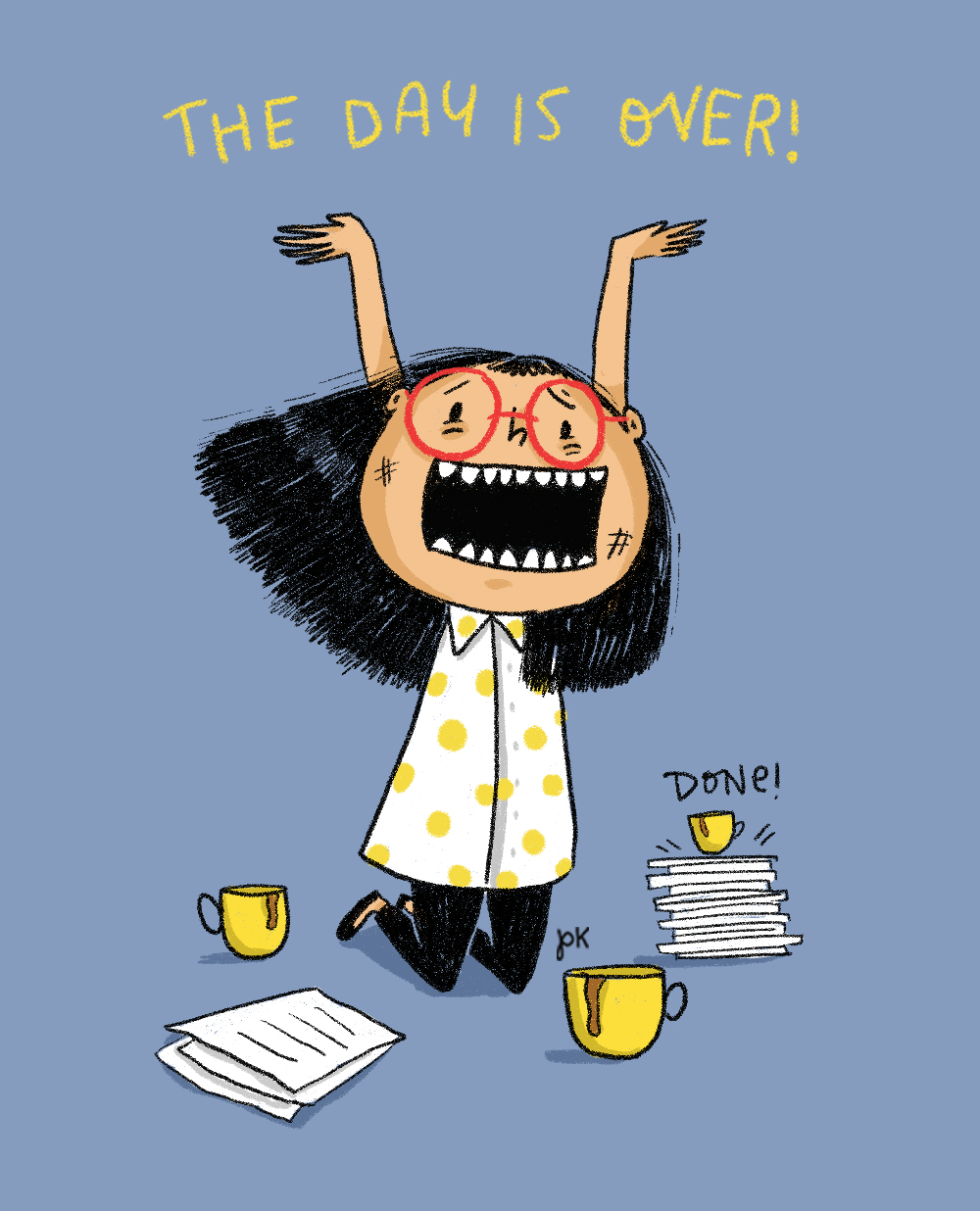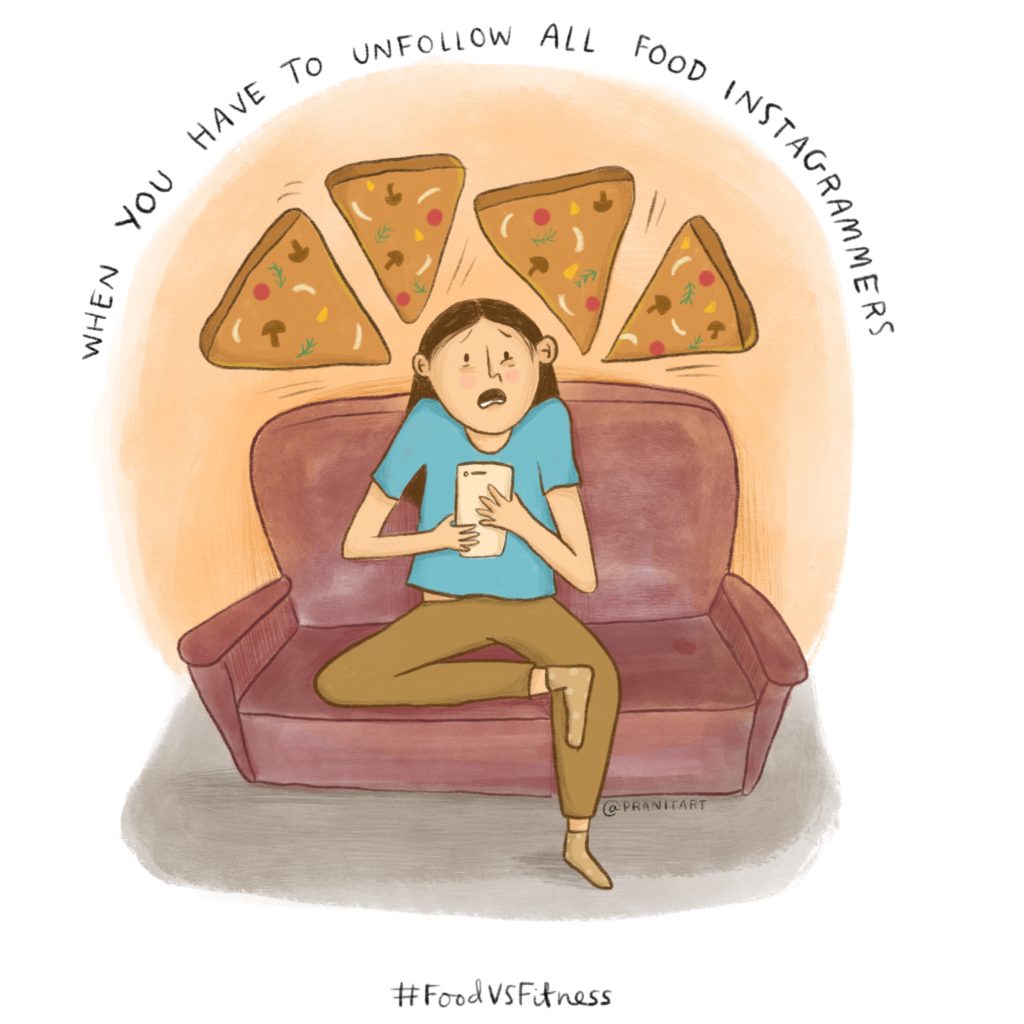 “What motivates you to draw everyday? Where do you get your content/ ideas from?” – are questions I get asked frequently.
“What motivates you to draw everyday? Where do you get your content/ ideas from?” – are questions I get asked frequently.
My Instagram feed is full of ideas/concepts that I have impulsively jotted down on my phone or a piece of paper amidst dinners, loo breaks or a long runs. I call this the “I can draw about this!” moment. The exercise is to actively think about and mindfully observe thoughts or scenarios that happen daily that would make great illustration. When you notice something noteworthy in your day, you ask yourself if it works as a still visual and bingo – this is the “I can draw about it!” moment. In the beginning it is a bit tiring to actively think about everything that happens around you and to you, but before you know it, it will turn into a prized passive skill.
Warning: You’ll have tons of scrap paper, used tissues and scribbled restaurant bills full of ideas in your bag! 😀
This skill will take time and patience to develop, so until then, here’s 30 illustration ideas as your training wheels. Feel free to start this whenever you’d like, or let’s start together in April so you can actively see how others are doing – I will play along once in a while as well! You can also share this with your friends to see how creativity differs from person to person. No excuses no more- amazing Instagram feed starts now!

If you do participate in this challenge, do tag me & use the hashtag #ICanDrawAboutIt – that way I could handpick a few and repost them on my stories 🙂
Get drawing! And psst. currently creating some kick-ass, top notch quality products, subscribe to stay updated! 🙂
Want to hear more about upcoming blog posts, new product launch, giveaways, promo codes, etc.? Just fill in your details and hit subscribe! 🙂

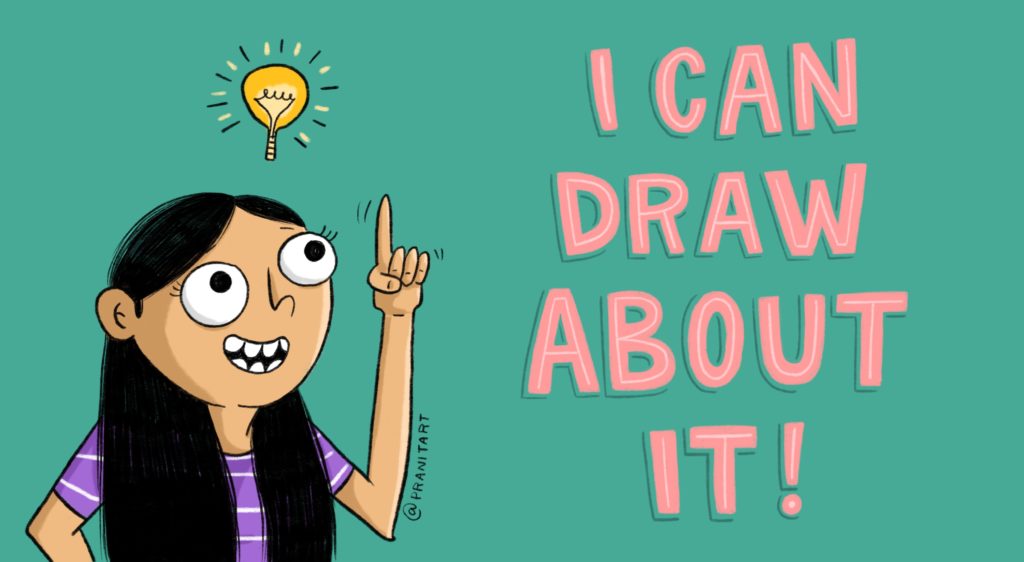
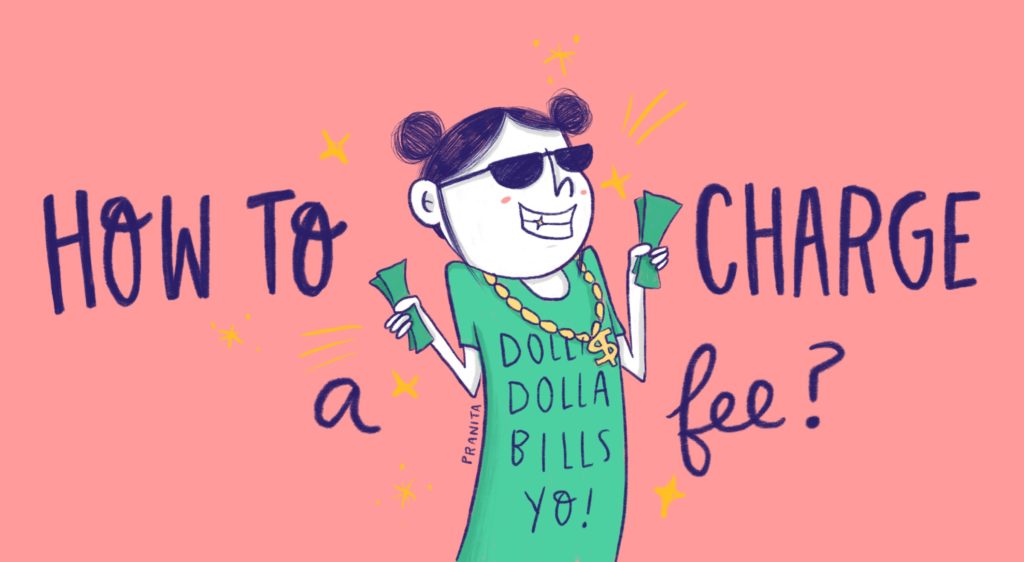



 This post is very subjective, every freelancer has their own journey and I’m sharing mine with you. Today I’m writing about my education and initial work experience, why I freelance and how my career has shaped so far.
This post is very subjective, every freelancer has their own journey and I’m sharing mine with you. Today I’m writing about my education and initial work experience, why I freelance and how my career has shaped so far.

